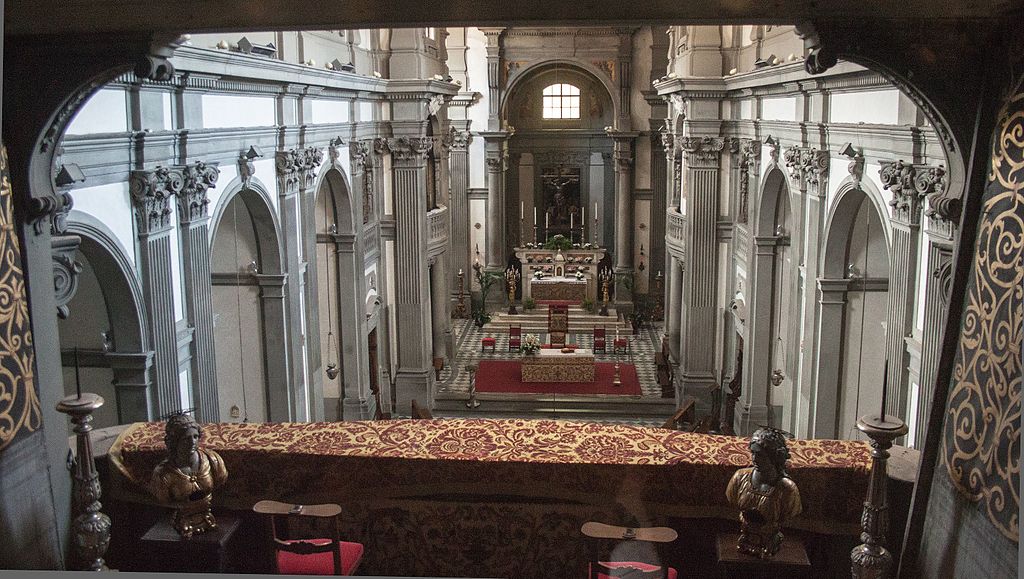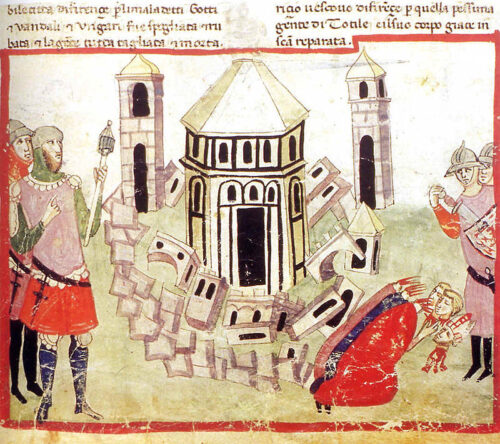Baby
According to the military tradition, the main temple of the city was dedicated to the god of war, Mars, the first patron of Florentia. The temple was built at the northern edge of the town, where Piazza del Duomo is today (most probably at the site of the cathedral). Around the main square or the forum, Urbis was the Curia, the ancient senate, and a Capitoline Triad temple dedicated to the Roman gods of Jupiter, Juno, and Minerva.



The city quickly expanded in every direction with several landmark buildings of the era like the amphitheater, the thermal baths, and the aqueduct located outside the walls. Outside the walls was also a river port that connected Florentia to the sea and gave its commerce an important naval way out. Its pivotal point on the map and relatively easy access to the sea attracted the first foreign merchants from the east, who later established their settlement on the other side of the river.



At the time of Diocletian, in 285 AD we have the first recognition of the growing importance of the city which numbered around 20.000 people at the time. Florentia was then raised to “Corrector Italiae”, in essence, the capital of the whole Tuscia (later Tuscany) region, preferred to other, older Etruscan cities such as Fiesole, Arezzo, and Perugia. A roman legion responsible for the whole region would be now stationed in Florentia.
The traders from the East who had established their first permanent settlement in the second century, right on the other side of the bridge had brought with them their customs and religions, in the beginning, that of goddess Isis and then Christianism. An easterner was the first Christian martyr in the history of the city. An Armenian prince named Miniato who served in the Roman army under Emperor Decius had decided to become a hermit somewhere near Florentia.
In 250 AD the Emperor who was at the time persecuting Christians within the Empire was camped outside the gates of Florence. Miniato was brought before him with the charge of refusing to sacrifice to the Roman gods. He was put through numerous torments until he has finally beheaded near modern-day Piazza Della Signoria. According to the legend he picked up his head, crossed the Arno, and returned to his hermitage on the hill where the Basilica of San Miniato al Monte stands today.



The ancient Christian tombstones found in the Church of Santa Felicita, between Ponte Vecchio and Palazzo Pitti, date back to the second century. The underground morphology of the site and the dozens of early Christian inscriptions written mostly in Greek and Syrian testify to the presence of a Christian community of Greek and Syrian origin that had built their catacombs under the foundations of the present church.
The first Christian cemetery of Florentia became the first church of the Roman city sometime during the 4th century. That church was dedicated to Saint Felicitas of Rome who had been martyred in Carthage in 203. The first bishop of Florentia, present at a Christian synod that was held in Rome in 313, was most probably not by pure coincidence recorded as Bishop Felice.



In 393 the Bishop of Milan Aurelio Ambrogio (St. Ambrogio today), the most important Church figure of the 4th century revered as a saint by all Christian churches today, accepted the invitation of the community of Florentia and remained in the city for about a year. During that time he founded the Church of San Lorenzo, which would serve as the basilica of Florentia for the next 300 years.



A young Florentine Christian noble named Zenobius would make an impression on the bishop of Milan (Saint Ambrose), who appreciated his preaching talent and vouched for him to the Pope in Rome. Pope Damasus I (r. 366–386) shared the bishop’s enthusiasm and employed him in various important missions, including a legation to Constantinople. He later returned to his native city where he was elected bishop of Florentia by popular demand. Zenobius played a crucial role in the spread of Christianity in the city and its outskirts, he organized the diocese and combated Arianism.


In 405 he would take on a much greater role using his appeal to the people and ability to preach to unite the city’s population against the hordes of the Ostrogoth King Radagaiso who had invaded Italy with a massive army. He is venerated as a saint by both the Catholic Church and the Orthodox Church and is the main patron of the Florentine Archdiocese, along with St. Anthony, with his feast day celebrated on May 25.


The Ostrogoth King led a broad coalition of Germanic & Celtic tribes (Goths, Vandals, Burgundians among others) that exceeded 200.000 strong and had already sacked the whole of Northern Italy by the end of 405, displacing the people and devastating their properties. In 406 the Barbarians reached Tuscany and started to besiege Florentia.
In August of 406, the Roman general Flavius Stilicho with an army of 5.000, among them many freed & recruited just before the battle slaves, managed to break the siege and defeat the superior army near Fiesole on August 23, 406. The Ostrogoth King Radagaiso tried to escape but was captured and beheaded in front of the gates of the city.



As a sign of gratitude for this god-given victory a new church was built just off the Porta Aquilonia, the northern gate of the city, dedicated to Saint Reparata of Caesarea (a Saint particularly popular during the Middle Ages in Tuscany), the Church of Santa Reparata. A few centuries later that church would become the city’s cathedral, the famous Santa Maria del Fiore.



The victory against the Ostrogoth king attributed by many Florentines to the prayers of the Christians played a crucial role in the conversion of the whole population to the new religion. The old gods were replaced by the new saints and the old patron god Mars by the cult of San Giovanni Battista (John the Baptist).
The Fall of the Western Empire and the Germanic invasions plunged Florentia into the dark ages. Its population waned and its commerce ground to a halt. With a constant struggle between various Germanic leaders for the control of the Italian peninsula during the 5th century, from Vandals to Ostrogoths and Visigoths the whole region of Tuscany was at the mercy of the invaders. The urban structure of the city fell into a general state of degradation.


Odoacer (r. 476–493), a former head of the Germanic foederati (mercenaries) of Italy had deposed the child emperor Romulus Augustulus and had set himself up as King of Italy in 476 AD.
He was succeeded by Theodoric the Great (r. 493 – 526) who established a firm Ostrogothic Kingdom in the Italian peninsula. Theodoric cooperated closely with the old Roman elite and showed considerable religious tolerance, which was also extended toward Jews.
After Odoacer’s death (493) the newly ascended Byzantine emperor Justinian I (r. 527- 565) would put forward the ambitious plan of the reconquest of the defunct Western Empire, immersing the Italian cities into a 20-year war between the Goths and the Byzantines (Gothic War 535-553) that further reduced their size and impoverished their populations.
In 541 Florentia was occupied by the troops of the Byzantine General Belisarius but nine years later, the new king of the Goths Totila (r. 541–552) looted and destroyed the city. In 552 a senior court eunuch of the Byzantine Emperor, a Romanized Armenian named Narses would manage to defeat the Goths, kill king Totila and reconquer most Italian cities for the Byzantines.




Famine and plague completed the gloomy puzzle of the years that followed evidently in Florentia’s case by the modest size of the new wall which was probably built to include less than a thousand inhabitants.
The fragile Byzantine rule became even more precarious with the removal of the experienced commander Narses in 568. In that same year, a massive army of Lombards crossed the Alps heading south. In 570 AD Florentia became part of their new Italian realm.
In the beginning, the Lombards, most of them pagan or Arian Christians acted with cruelty unfamiliar to the Roman population which compared their ways to those of the Ostrogoths, an ethnic group however that had already co-existed with them as their mercenaries.



